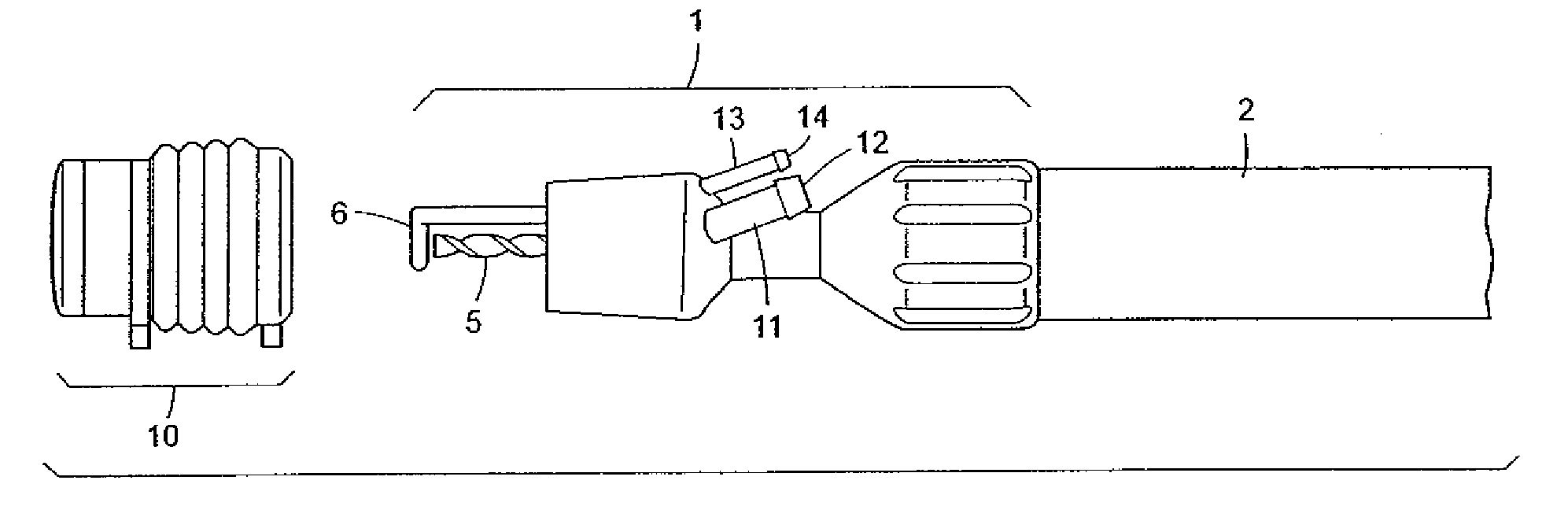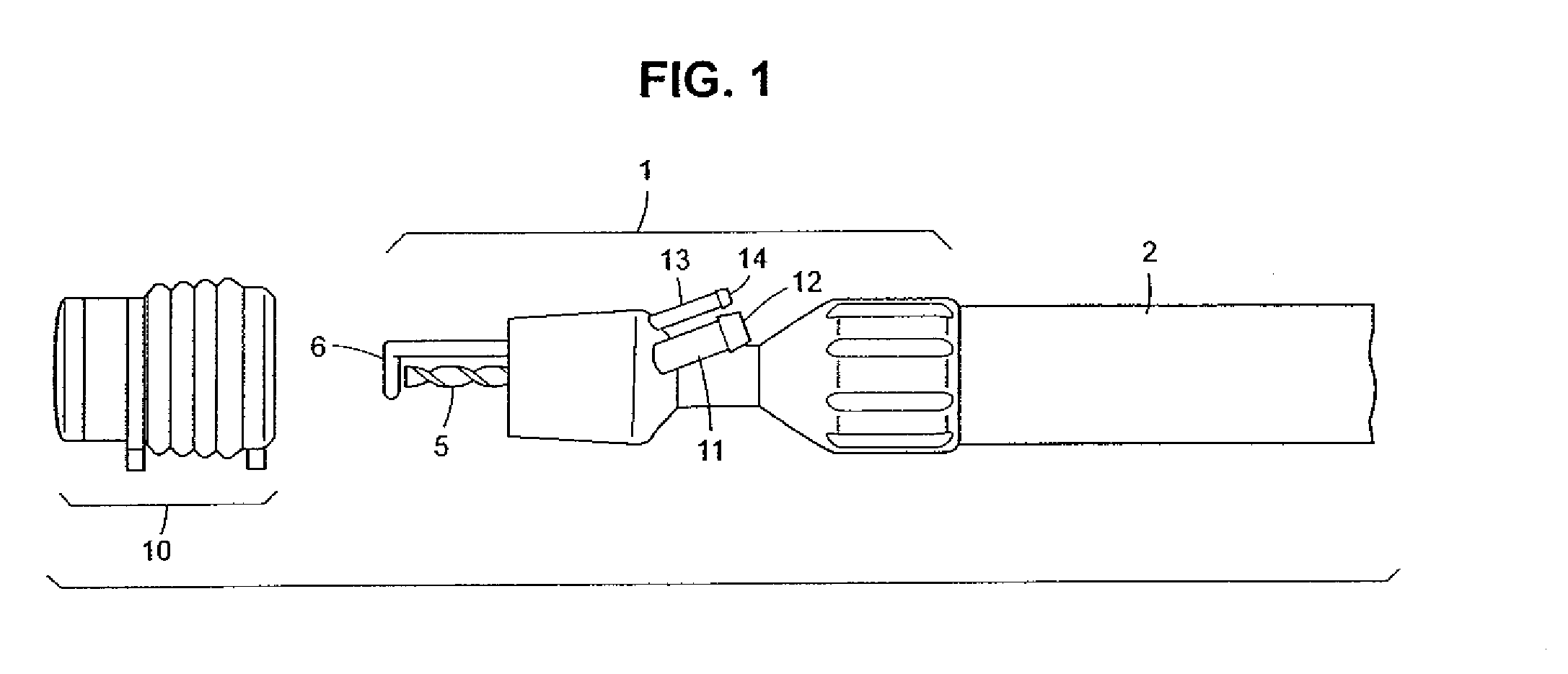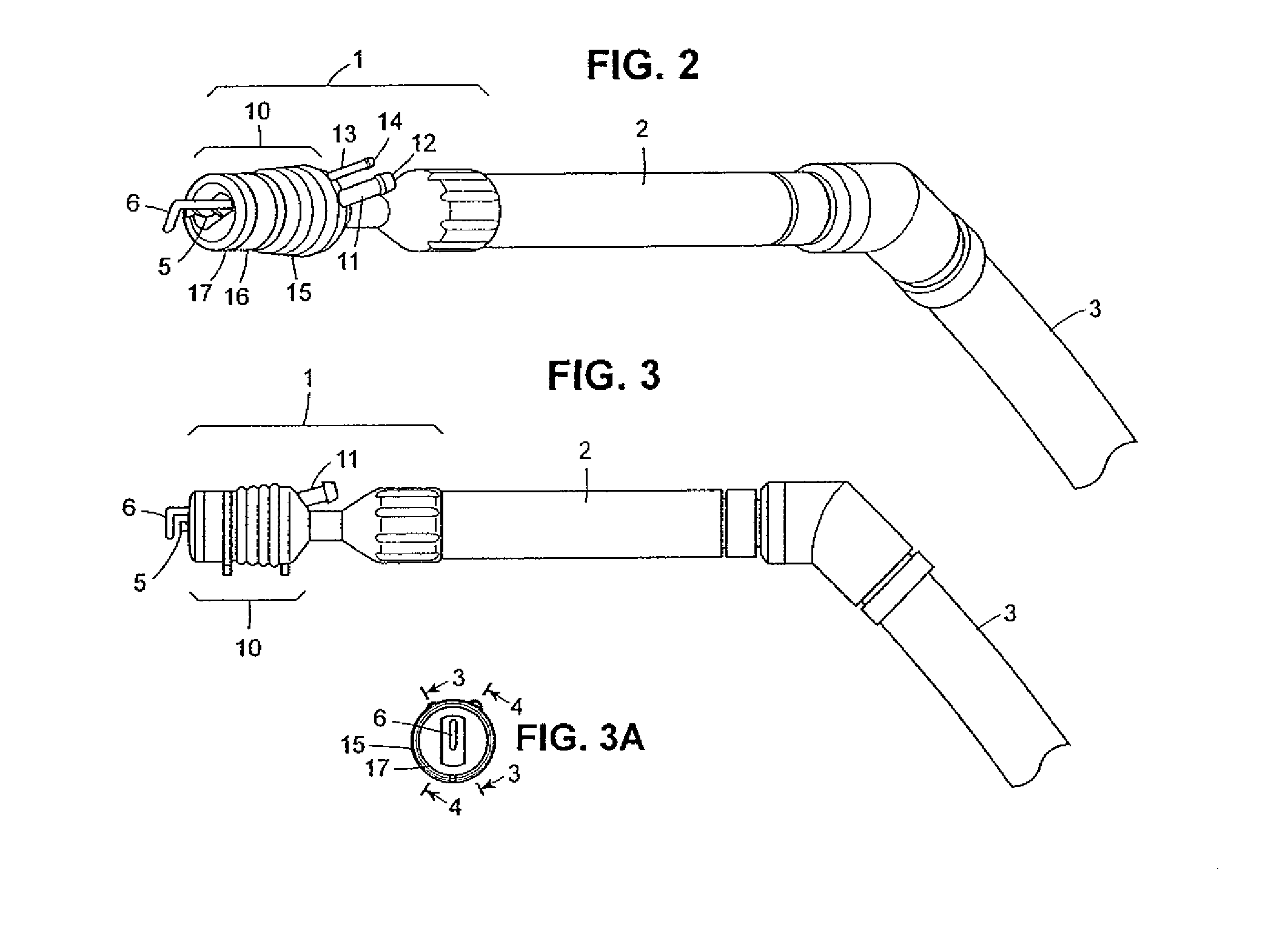Autologous Bone Harvest During Osteotomy and Bone Drilling Procedures
a bone harvesting and autologous technology, applied in bone drill guides, medical science, surgery, etc., can solve the problems of difficult to achieve with the current surgical technique, loss of bone that is removed by this instrument, and gap around the entire periphery, so as to prevent scattering and loss of particulate bone and reduce contamination of the surgical field
- Summary
- Abstract
- Description
- Claims
- Application Information
AI Technical Summary
Benefits of technology
Problems solved by technology
Method used
Image
Examples
Embodiment Construction
[0067]FIG. 1 is an expanded perspective view of a bone cutting tool of the invention having integral irrigation and suction systems. The tool is a craniotome which is used to cut an opening in the skull for brain surgery. The craniotome 1 is attached to a handpiece 2 which in turn is attached to a pneumatic line 3 (see FIGS. 2-4) or an electric power source. Cutting burr 5 has a diameter and an axis and is actuated by a foot switch (not shown). And the foot plate 6 is used to guide the tool along the inside of the skull in order to prevent penetration of the dura. A suction tube 11 is provided with a barbed fitting 12 and an irrigation tube 13 has a barbed fitting 14. Collection module 10 is illustrated before it is attached to craniotome 1.
[0068]FIG. 2 is a perspective view of FIG. 1 with the collection module 10 of the invention attached to the craniotome. A flexible bellows 15 is shown in this embodiment with a cylindrical duct in the form of shield 16 and a cap in the form of el...
PUM
 Login to View More
Login to View More Abstract
Description
Claims
Application Information
 Login to View More
Login to View More - R&D
- Intellectual Property
- Life Sciences
- Materials
- Tech Scout
- Unparalleled Data Quality
- Higher Quality Content
- 60% Fewer Hallucinations
Browse by: Latest US Patents, China's latest patents, Technical Efficacy Thesaurus, Application Domain, Technology Topic, Popular Technical Reports.
© 2025 PatSnap. All rights reserved.Legal|Privacy policy|Modern Slavery Act Transparency Statement|Sitemap|About US| Contact US: help@patsnap.com



